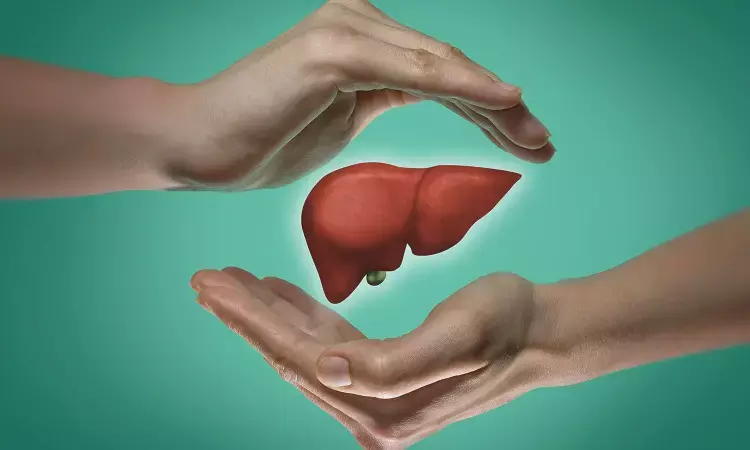- Home
- Medical news & Guidelines
- Anesthesiology
- Cardiology and CTVS
- Critical Care
- Dentistry
- Dermatology
- Diabetes and Endocrinology
- ENT
- Gastroenterology
- Medicine
- Nephrology
- Neurology
- Obstretics-Gynaecology
- Oncology
- Ophthalmology
- Orthopaedics
- Pediatrics-Neonatology
- Psychiatry
- Pulmonology
- Radiology
- Surgery
- Urology
- Laboratory Medicine
- Diet
- Nursing
- Paramedical
- Physiotherapy
- Health news
- Fact Check
- Bone Health Fact Check
- Brain Health Fact Check
- Cancer Related Fact Check
- Child Care Fact Check
- Dental and oral health fact check
- Diabetes and metabolic health fact check
- Diet and Nutrition Fact Check
- Eye and ENT Care Fact Check
- Fitness fact check
- Gut health fact check
- Heart health fact check
- Kidney health fact check
- Medical education fact check
- Men's health fact check
- Respiratory fact check
- Skin and hair care fact check
- Vaccine and Immunization fact check
- Women's health fact check
- AYUSH
- State News
- Andaman and Nicobar Islands
- Andhra Pradesh
- Arunachal Pradesh
- Assam
- Bihar
- Chandigarh
- Chattisgarh
- Dadra and Nagar Haveli
- Daman and Diu
- Delhi
- Goa
- Gujarat
- Haryana
- Himachal Pradesh
- Jammu & Kashmir
- Jharkhand
- Karnataka
- Kerala
- Ladakh
- Lakshadweep
- Madhya Pradesh
- Maharashtra
- Manipur
- Meghalaya
- Mizoram
- Nagaland
- Odisha
- Puducherry
- Punjab
- Rajasthan
- Sikkim
- Tamil Nadu
- Telangana
- Tripura
- Uttar Pradesh
- Uttrakhand
- West Bengal
- Medical Education
- Industry
MASLD associated with increased type 2 diabetes development in pediatric obesity patients:Study

A new study published in the journal of Diabetes Care found that pediatric obesity with metabolic dysfunction-associated steatotic liver disease (MASLD), as determined by transaminases or diagnostic code, is related to an elevated risk of developing type 2 diabetes at a young age.
In high-income nations, the prevalence of pediatric obesity has increased two- to three-fold over the past 30 years. The WHO Global Health Observatory's 2017 data indicates that approximately 340 million children and adolescents between the ages of 5 and 19 are affected by obesity. The incidence of obesity is rising in tandem with other metabolic diseases such type 2 diabetes (T2DM), increased visceral obesity, dyslipidemia, liver steatosis, atherosclerosis, hypertension, and cholesterol cholelithiasis. Thus, this study was set out to evaluate the relationship between youth-onset type 2 diabetes and metabolic dysfunction-associated steatotic liver disease in pediatric obesity, the combined impact of MASLD and intermediate hyperglycemia on type 2 diabetes risk and the impact of obesity treatment on type 2 diabetes risk.
The Swedish Childhood Obesity Treatment Register (Barnobesitas Registret i Sverige [BORIS]) from 1999 to 2020 was used in a cohort study that was connected to national registers. A total of 10,346 overweight or obese youngsters and 59,336 matched control people were enrolled in the study. Transaminases and the diagnostic code were used independently to define MASLD. Data on type 2 diabetes was gathered from national databases.
The study found that the median follow-up age in the obese cohort were 8.1 (Q1, Q3: 5.1, 11.7) years, whereas the median age at type 2 diabetes diagnosis was 16.9 years. At age 30, the cumulative incidence of type 2 diabetes was 0.7% in control persons, 9.9% in obesity alone, and 22.7% in obesity plus MASLD.
The risk of type 2 diabetes was linked to MASLD, regardless of the influence of factors such as sex, age, obesity level, intermediate hyperglycemia, and a family history of the disease. The combined impact of intermediate hyperglycemia and MASLD elevated the probability of type 2 diabetes. Also, the treatment for obesity that produces an optimal response lowers the risk.
Overall, the outcomes of this study found that the individuals with MASLD had a shocking 2.71-fold higher risk of developing type 2 diabetes at a young age than their non-obese peers. When paired with intermediate hyperglycemia, the risk increased to 9.04 times that of MASLD. Fortunately, successful obesity therapy greatly reduced this risk, lowering the HR to 0.23.
Source:
Putri, R. R., Casswall, T., Danielsson, P., Marcus, C., & Hagman, E. (2024). Steatotic Liver Disease in Pediatric Obesity and Increased Risk for Youth-Onset Type 2 Diabetes. In Diabetes Care. American Diabetes Association. https://doi.org/10.2337/dc24-1236
Neuroscience Masters graduate
Jacinthlyn Sylvia, a Neuroscience Master's graduate from Chennai has worked extensively in deciphering the neurobiology of cognition and motor control in aging. She also has spread-out exposure to Neurosurgery from her Bachelor’s. She is currently involved in active Neuro-Oncology research. She is an upcoming neuroscientist with a fiery passion for writing. Her news cover at Medical Dialogues feature recent discoveries and updates from the healthcare and biomedical research fields. She can be reached at editorial@medicaldialogues.in
Dr Kamal Kant Kohli-MBBS, DTCD- a chest specialist with more than 30 years of practice and a flair for writing clinical articles, Dr Kamal Kant Kohli joined Medical Dialogues as a Chief Editor of Medical News. Besides writing articles, as an editor, he proofreads and verifies all the medical content published on Medical Dialogues including those coming from journals, studies,medical conferences,guidelines etc. Email: drkohli@medicaldialogues.in. Contact no. 011-43720751


